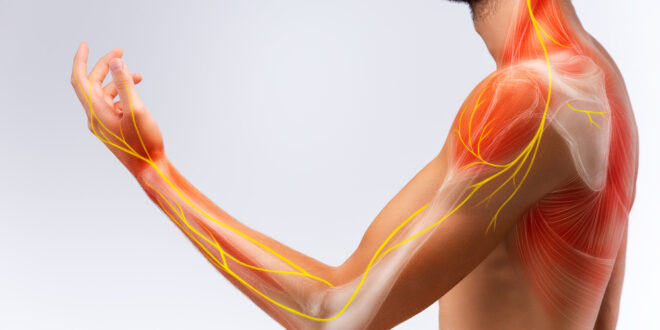Living with chronic pain can have a substantial negative impact on one’s quality of life, making everyday tasks difficult and draining. To achieve comfort and well-being, it is essential to comprehend and manage pain, regardless of its source—an injury, a disease, or even stress.
Comprehending Pain
Understanding the nature of pain is a prerequisite for managing it properly. There are two basic categories of pain:
Acute Pain:
This is a transient pain that typically follows an accident or particular event, such surgery. Acute discomfort usually goes away when the underlying problem gets better.
Pain that lasts three months or more is classified as chronic pain. Many disorders, such as fibromyalgia, arthritis, and nerve injury, can cause chronic pain, which frequently needs to be managed in a multimodal way.
The Cycle of Pain
It might be challenging to escape the loop that chronic pain frequently establishes. Pain may cause one to become less active, which may exacerbate stiffness and weakening in the muscles. This may worsen depressive and anxious sensations, making the discomfort even more intense. Understanding this cycle is essential to putting good pain management techniques into practice.
Ways to Make Everyday Comfort Easy
1. Health Care Intervention
For many people, the first step in managing their discomfort is seeking medical attention. Speak with medical experts to learn about your choices for treating your particular issue.
a. Painkillers
Over-the-Counter (OTC):
Acetaminophen and nonsteroidal anti-inflammatory medications (NSAIDs), such as ibuprofen, are common OTC pain relievers that can help with mild to severe pain.
Prescription Drugs:
Physicians may recommend stronger painkillers or drugs made especially for ailments like neuropathic pain in cases of extreme pain.
Topical Treatments:
By administering medication directly to the painful location, creams and patches can provide localized comfort.
b. Manual Therapy
One of the most important aspects of treating chronic pain is physical therapy. Strength, flexibility, and mobility can all be enhanced with a customized exercise program created by a licensed physical therapist.
Exercises with a specific purpose:
Stretching increases flexibility and eases stress, while strengthening exercises can help stabilize impacted areas.
Manual therapy:
Methods like massage and joint manipulation can reduce discomfort right away.
2. Modifications to Lifestyle
Your daily routine can significantly affect your ability to manage pain by including good habits.
a. Frequent Exercise
One of the best ways to deal with pain is to exercise. The body naturally produces endorphins, which are released when you exercise.
Low-Impact Activities:
Since they lessen joint strain and improve cardiovascular health, swimming, cycling, and walking are great options for people with chronic pain.
Strength Training:
By including mild resistance training, you can strengthen the muscles surrounding your joints and reduce pain from ailments like arthritis.
Exercises for Flexibility:
Practices like yoga or pilates improve flexibility and encourage relaxation, which helps to relieve pain even more.
b. Diet
The degree of pain and general health can both be significantly impacted by a well-balanced diet. People with chronic pain can benefit especially from an anti-inflammatory diet.
Fruits and Vegetables:
Antioxidant-rich foods including bell peppers, leafy greens, and berries might help reduce inflammation.
Healthy Fats:
Include foods high in omega-3 fatty acids, which have been shown to have anti-inflammatory qualities. Examples of these include walnuts, salmon, and flaxseeds.
Herbs & Spices:
Ginger and turmeric not only improve meals but also have pain-relieving properties.
3. Body-Mind Methods
When it comes to pain management, the mind-body connection is quite potent. Mind-body methods can assist improve general well-being and change how pain is perceived.
a. Meditation and Mindfulness
By concentrating on the here and now, mindfulness techniques can dramatically lower levels of stress, anxiety, and discomfort.
Breathing with awareness:
To reduce stress and promote relaxation, focus on taking slow, deep breaths. By calming the nerve system, this method helps people cope with pain more effectively.
Meditation:
Consistent meditation practice helps lessen the emotional reaction to pain. There are numerous apps and web platforms that offer guided meditations specifically designed to alleviate discomfort.
b. CBT, or cognitive behavioral therapy
CBT is a psychological strategy that assists people in comprehending and altering unfavorable thought patterns associated with suffering.
Reframing Thoughts:
Cognitive Behavioral Therapy (CBT) teaches coping mechanisms that can change how pain is perceived, reducing the sense of overwhelm.
Behavioral Modifications:
People can modify their lifestyles in a way that helps them feel less pain by recognizing their triggers and habits.
4. Complementary Medicine
Complementary therapies are a popular means of relief that people can incorporate into their pain management regimens.
1. Acupuncture
Thin needles are inserted into certain bodily locations during the practice of acupuncture, which has its origins in ancient Chinese medicine. Studies indicate that acupuncture is a useful treatment for a variety of pain conditions.
Research suggests that acupuncture may be useful in the treatment of pain, including arthritis, migraines, and lower back pain.
Relaxation:
By fostering relaxation and lowering stress, this technique may help to mitigate discomfort even more.
b. Therapeutic Massage
Another useful method for reducing pain and increasing relaxation is massage therapy.
Pain Reduction:
A variety of methods, like deep tissue or Swedish massage, can ease discomfort and release tense muscles.
Improved Circulation:
Massage encourages blood flow, which can lessen discomfort and help in healing.
5. The Use of Heat and Cold
For some pain types, applying heat and cold therapy might offer instant relief.
a. Use of Cold Therapy
Reduces Inflammation:
Using cold compresses or ice packs can help numb acute pain and reduce swelling, particularly following an injury.
Use Recommendations:
The first 48 hours after an accident are frequently when cold therapy is most successful.
a. The use of heat therapy
Encourages Relaxation:
Heat can ease tense muscles and enhance blood flow, which reduces discomfort.
Suggested Use:
Heat treatment is helpful for reducing muscle tension and chronic pain.
6. Good Sleep Practices
A good night’s sleep is essential for healing and managing discomfort. An uncomfortable and exhausting cycle can result from inadequate sleep, which makes pain worse.
Suggestions for Increasing Sleep Quality:
Create a Routine:
To help your body’s internal clock to function properly, go to bed and wake up at the same time every day.
Establish a Comfortable Environment:
To encourage sound sleep, make sure your bedroom is quiet, cool, and dark.
Limit Screen Time:
Because blue light can disrupt the production of melatonin, limit your screen time at least an hour before bed.
7. Mutual Aid
Creating a solid support system might help you on your pain management path. Comfort and inspiration can be obtained through emotional support from friends, family, or support groups.
Methods for Promoting Social Support:
Join Support Groups:
Making connections with people who are going through similar things might help you feel like you belong.
Open Communication:
Talking to loved ones about your experiences will help them empathize and understand you better.
8. Customizing Your Plan for Pain Management
Each person has a different experience with pain. To effectively master pain, a customized pain management plan must be created.
Seek Advice from Medical Professionals:
To determine your unique needs, collaborate with physicians, PTs, or OTs.
Examine Your Options for Treatment:
Take into account a range of medical procedures, dietary adjustments, alternative therapies, and mind-body practices.
Monitor Your Development:
To track your pain threshold, triggers, and reactions to different therapies, keep a pain journal. Your healthcare provider can use this information to influence future decisions.
Remain Adaptable:
Show an open mind to trying out new strategies and modifying your strategy as necessary. There is frequently no one-size-fits-all approach to pain management.
9. Pain Management and Technology
Technological developments have created new opportunities for pain management. Many gadgets and apps can help monitor discomfort and offer resources.
Apps for tracking pain
People who use apps to track their pain levels, triggers, and responses to treatment might learn more about their pain patterns. Healthcare practitioners can access this data to make better management decisions.
b. VR, or virtual reality
Virtual reality appears to be a useful tool for pain management, according to recent studies. Virtual reality (VR) offers engrossing experiences that ease discomfort and encourage calm.
10. Mindset and Acceptance
Your experience of pain can be significantly impacted by adopting an optimistic outlook. For emotional well-being, it is imperative to shift your attention from what you cannot control to what you can, even though this can be difficult.
Acceptance:
Lessening the emotional strain of battling chronic pain might come from acknowledging that it is a fact of life. This is about finding ways to live completely in spite of the pain, not about giving up.
Positive Affirmations:
You can change your perspective and feel better about pain management in general by using positive affirmations and visualizations.
Summary
Pain management calls for a multimodal strategy that incorporates medical treatments, dietary adjustments, mind-body practices, and complementary therapies.
Recall that the path to efficient pain management is unique and may call for persistence and time. Being able to manage discomfort becomes a sustainable reality with dedication and fortitude.
 Personal Finance and Attractive Interest Rates Unlock Smart Savings with Low Rates and Expert Financial Tips
Personal Finance and Attractive Interest Rates Unlock Smart Savings with Low Rates and Expert Financial Tips






